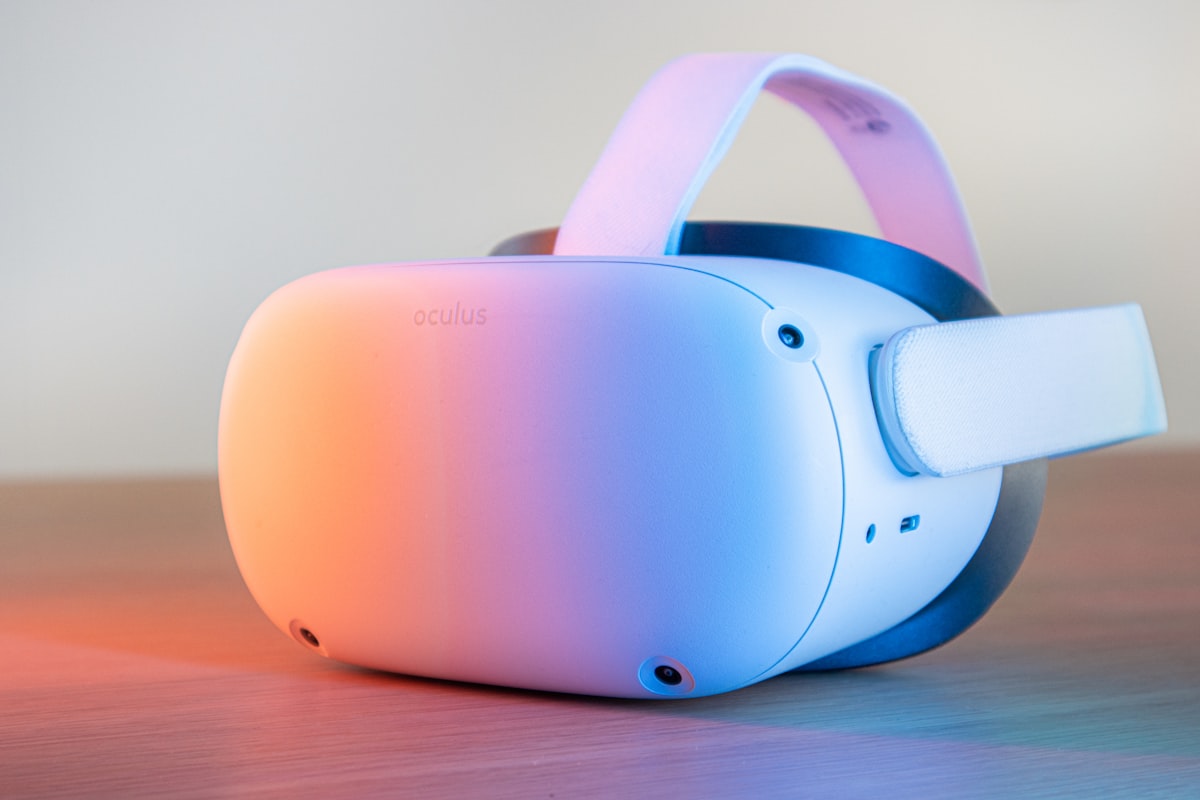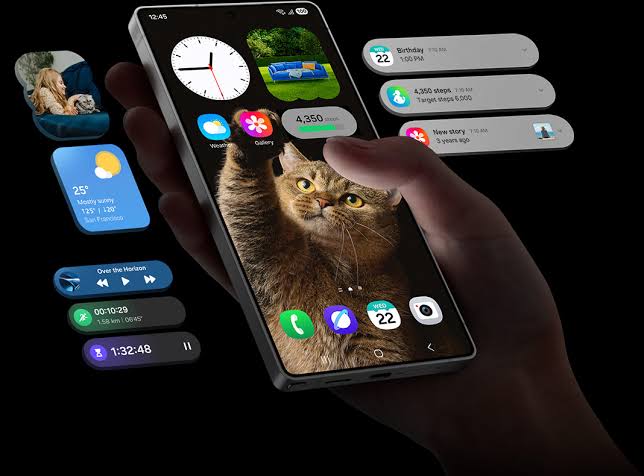
The smartphone industry is on the brink of another revolutionary leap. While dual-folding phones like Samsung’s Galaxy Z Fold series have become mainstream, the next generation of foldable technology is already here: tri-folding smartphones that transform from pocket-sized phones into full-sized tablets.
Watch: First Look at Samsung’s Tri-Fold Prototype
Samsung’s revolutionary tri-fold phone prototype showcased at MWC 2025
The Evolution of Foldable Technology
We’ve come a long way since the first foldable phones hit the market in 2019. What started as a novelty with fragile screens and limited durability has evolved into a mature technology that millions of users trust daily. The original Samsung Galaxy Fold had a screen that could break from debris, lasted only 10,000 folds, and cost nearly $2,000.
Fast forward to 2025, and foldable technology has matured dramatically:
- Durability Improved: Modern foldables withstand 200,000+ folds (5+ years of daily use)
- Screen Technology Advanced: Ultra-thin glass replaced plastic, eliminating visible creases
- Water Resistance Added: IP68/IP69 ratings now standard on flagship foldables
- Prices Stabilized: Mid-range foldables now available under $1,000
- Mainstream Adoption: Over 20 million foldables sold globally in 2024
Now, tri-folding phones are poised to be the next big thing in mobile innovation, offering even more versatility and screen real estate.
Why Tri-Folding Phones Matter
Traditional smartphones have one screen. Foldables like the Z Fold have two sections (or one that folds). But tri-folding phones? They feature three distinct panels that fold out to create a device as large as a full tablet – typically around 10 inches or more when fully unfolded.
The key advantages:
- Ultimate Versatility: Use it as a regular phone (one panel), a mini tablet (two panels), or a full tablet (all three panels unfolded)
- Enhanced Productivity: True multitasking with 3-4 apps visible side-by-side simultaneously
- Immersive Entertainment: Movie watching and gaming on a tablet-sized 10-inch+ display
- Compact When Closed: Remarkably, still fits in your pocket despite the massive unfolded size
- No Compromise: Full flagship specs in every mode
Just saw the tri-fold phone demos at MWC. This is INSANE. When fully unfolded it’s literally a tablet. When folded it’s the size of a regular phone. The future is here and it’s foldable AF 📱➡️📱📱➡️📱📱📱 #MWC2025 #TriFold
— Mobile Tech Reporter (@mobiletechrep) March 5, 2025
Leading Brands in the Tri-Fold Race
Xiaomi Leading the Charge
Xiaomi has been at the forefront of tri-folding innovation, having already released production models in China. The company’s latest Ultra Series features impressive specs that put traditional tablets to shame:
Xiaomi Ultra Pro Max Highlights:
| Specification | Details |
|---|---|
| Processor | Snapdragon 8 Elite Gen 5 (4nm process) |
| Operating System | Android 16-based HyperOS 3 |
| Main Display | 6.9-inch LTPO AMOLED, 120Hz, 3,500 nits peak brightness |
| Unfolded Display | 10.2-inch tablet mode with 4:3 aspect ratio |
| Rear Display | 2.9-inch LTPO AMOLED back display for notifications |
| Camera System | Triple 50MP sensors (main, telephoto, ultrawide) |
| Battery | 5,500mAh with 120W fast charging |
| Weight | 295g (incredibly light for a tri-fold) |
The Pro Max variant showcases what’s possible when you push foldable technology to its limits. The triple 50MP camera system means you don’t have to compromise on photography quality, while the secondary back display adds practical functionality for checking notifications without unfolding the device.
Xiaomi Tri-Fold Hands-On Review
Comprehensive hands-on review of Xiaomi’s tri-folding phone showing real-world usage
Oppo Find X9 Series – November 2025 Launch
Oppo isn’t far behind with its Find X9 series, officially launching this month (November 2025). The company has been teasing this device for months, and early hands-on reports are extremely positive:
Oppo Find X9 Pro Specifications:
- Chipset: MediaTek Dimensity 9500 (competitive with Snapdragon)
- Display: 6.78-inch LTPO AMOLED, 120Hz, 3,600 nits peak brightness
- Unfolded Display: 9.96-inch diagonal when all three panels extended
- Durability: IP68/IP69 dust and water resistance (industry-first for tri-fold)
- Camera: 50MP primary with OIS, 200MP periscope telephoto (!), 50MP ultrawide
- Launch Date: November 19, 2025
- Expected Price: Starting at $2,299
The standout feature here is that massive 200MP telephoto lens – offering unprecedented zoom capabilities in a foldable device. Oppo claims 10x optical zoom and up to 100x digital zoom with AI enhancement.
What Reddit Users Are Saying About Tri-Folds:
u/FoldablesFan2025:
“I’ve been using the Xiaomi tri-fold for 2 weeks now. Game changer for productivity. I can have email, Slack, and Google Docs all open at once. It’s replaced my iPad completely.”
u/TechAddict99:
“The engineering is mind-blowing. Two hinges that work perfectly in sync, no gaps when closed, and it’s actually thinner than my old Z Fold when folded! How is this even possible?”
u/SkepticalBuyer:
“I was worried about durability but Xiaomi says it’s rated for 500,000 folds. That’s like 10+ years of daily use. The screen has a nano-coating that makes the crease almost invisible too.”
u/PriceConscious:
“$2,300 is steep, but think about it – you’re getting a phone, tablet, and laptop replacement in one device. If it lasts 3-4 years, that’s actually decent value.”
Samsung’s Tri-Fold: Coming Q3 2025
Samsung, the company that pioneered mainstream foldables, is preparing its own tri-fold entry. While official specs haven’t been announced, leaked information suggests:
- Production Run: 200,000 units initially (limited availability)
- Launch Window: Late October to November 2025
- Display Size: 9.96 inches when fully unfolded, 6.49-inch cover display
- Expected Price: $2,499-$2,799
- S Pen Support: Full S Pen integration for productivity
Samsung’s tri-fold leaked video shows desktop mode working PERFECTLY. You can use Samsung DeX with keyboard and mouse while the phone is folded into a triangle stand. This is laptop-level productivity 🤯💻 #SamsungTriFold #GalaxyZ
— Samsung Leaks (@samsungleaks) September 15, 2025
The Technology Behind Tri-Folding: Engineering Marvels
Creating a phone that folds twice presents unique engineering challenges that manufacturers have spent years solving:
Advanced Hinge Mechanisms
Manufacturers have developed sophisticated multi-hinge systems that are engineering masterpieces:
- Dual Cam Mechanism: Two independent hinges that can withstand hundreds of thousands of folds
- Stress Distribution: Force is spread across the entire mechanism, not concentrated at one point
- Gapless Design: When closed, the three panels sit flush with no visible gaps
- Self-Locking Positions: The phone stays open at specific angles for hands-free use
- Debris Protection: Brush-sealed edges prevent dust and dirt from entering the hinge cavity
- Tested Durability: 200,000-500,000 fold cycles (roughly 5-10+ years of daily use)
Ultra-Thin Flexible Displays
Modern LTPO AMOLED technology allows for screens that can bend repeatedly without degradation. These aren’t your 2019 foldable screens – they’re vastly superior:
- Self-Healing Polymer Layers: Micro-scratches repair themselves over time
- Ultra-Thin Glass (UTG): Better durability and feel than plastic, only 30 microns thick
- Adaptive Refresh Rate: 1Hz to 120Hz for incredible battery efficiency
- Exceptional Brightness: 3,500-3,600 nits peak brightness for perfect outdoor visibility
- Minimal Crease: New manufacturing techniques make the fold nearly invisible
- Color Calibration: Each panel individually calibrated for perfect color matching
How Tri-Fold Hinges Actually Work
Detailed engineering breakdown of tri-fold hinge mechanisms and display technology
Battery Innovation: Powering Three Screens
Fitting enough battery capacity into a tri-folding phone requires creative solutions:
- Multi-Cell Battery Design: 3 separate battery cells distributed across the device’s compartments
- Silicon-Carbon Anodes: New battery chemistry provides 20% more capacity in the same space
- Intelligent Power Management: AI determines which panels are active and adjusts power accordingly
- Fast Charging: 120W-150W charging provides full charge in under 30 minutes
- Wireless Charging: 50W wireless charging despite the complex internal structure
- All-Day Battery: 5,000-5,500mAh total capacity ensures full-day use even with all screens active
Real-World Use Cases: Who Needs a Tri-Folding Phone?
Content Creators: Edit 4K videos, photos, and documents with actual tablet-class screen real estate. The large display makes timeline editing and color grading practical on mobile.
Business Professionals: Run multiple productivity apps simultaneously – email, calendar, Slack, and documents all visible at once. Perfect for the modern remote worker.
Mobile Gamers: Enjoy console-quality gaming on a large, high-refresh display with enough screen space for complex controls. Games like PUBG Mobile and Genshin Impact are transformative experiences.
Media Enthusiasts: Watch movies and browse content on an immersive 10-inch screen with theater-quality visuals and HDR support.
Digital Artists: Draw and design with S Pen or Apple Pencil support on a canvas large enough for serious creative work.
Students and Researchers: Read textbooks, annotate PDFs, and take notes with split-screen multitasking that actually works.
Used a tri-fold phone for a full workday. I had email on the left panel, Zoom call in the center, and notes on the right. This replaced my laptop, monitor, and phone. One device. Mind officially blown. 🤯💼📱 #TriFold #Productivity
— Remote Work Tips (@remoteworktips) October 8, 2025
Challenges and Considerations
1. Price – The Elephant in the Room
Let’s be real – tri-folding phones are expensive. Current foldables already cost $1,800-$2,000, and tri-folds push even higher:
- Xiaomi Ultra Pro Max: $2,299
- Oppo Find X9 Pro: ~$2,299 (estimated)
- Samsung Tri-Fold: ~$2,499-$2,799 (rumored)
However, consider this perspective: you’re replacing a phone ($1,000), tablet ($500-800), and potentially a laptop ($1,000+). If a tri-fold can genuinely replace all three for $2,300, the value proposition starts making sense.
2. Durability Concerns
While foldable technology has improved dramatically, tri-folding phones introduce additional complexity:
- More hinges = more potential failure points
- Extra-large unfolded screen more vulnerable to drops
- Long-term reliability still unproven (these are first-generation products)
That said, manufacturers are addressing these concerns with extensive testing, IP68/IP69 ratings, and warranty programs.
3. App Optimization – The Software Challenge
The Android ecosystem needs to catch up. Not all apps are optimized for tablet-sized displays, and tri-folding phones require even more developer support:
- Many apps don’t properly scale to 10-inch displays
- Split-screen multitasking varies by app
- Some apps force portrait orientation even on a 10-inch screen
Google is working with developers to create Android XR and foldable-optimized apps, but it will take time for the ecosystem to mature.
4. Weight and Thickness
Even with advanced engineering, tri-folding phones are thicker and heavier than traditional smartphones when folded:
- Xiaomi Ultra: 295g (still lighter than iPad Mini at 297g!)
- Folded Thickness: Approximately 12-14mm
- Comparison: iPhone 15 Pro Max is 221g and 8.25mm thick
This might not appeal to everyone, especially those who prioritize pocket-ability and one-handed use.
When Can You Buy One? Availability Timeline
The tri-folding revolution is happening RIGHT NOW:
| Brand | Model | Launch Date | Availability |
|---|---|---|---|
| Xiaomi | Ultra Pro Max | Already Available | China, expanding to global markets |
| Oppo | Find X9 Pro | November 19, 2025 | Global launch |
| Samsung | Galaxy Z Tri-Fold (rumored name) | Late Q4 2025 | Limited initial run (200K units) |
| Tecno | Phantom Ultimate 2 | Q1 2026 | Emerging markets |
The Verdict: Are Dual-Folding Phones Just a Stopgap?
Industry experts increasingly view traditional dual-folding phones (like the Z Fold 6 and Pixel Fold) as a transitional technology. Here’s why:
Tri-folds offer everything dual-folds can do, PLUS:
- True tablet-sized experiences when fully unfolded (10+ inches vs 7.6 inches)
- More flexible form factors (phone mode, mini tablet mode, full tablet mode)
- Better multitasking with 3-4 apps visible simultaneously
- More impressive “wow factor” that justifies the premium price
- Better value proposition as a genuine laptop/tablet replacement
As the technology matures and prices drop (give it 2-3 years), we could see tri-folds become the standard form factor for flagship foldables, with dual-folds moving to the mid-range market.
Hot take: The Z Fold 7 will be Samsung’s last dual-fold flagship. By 2027, all premium foldables will be tri-folds. Dual-folds will become the “budget” option. Mark my words. 📱📱📱 #FoldableFuture #TriFold
— Tech Predictions (@techpredictions) October 28, 2025
Looking to the Future: What’s Next?
2025 is shaping up to be the year tri-folding phones go mainstream. With major manufacturers like Xiaomi, Oppo, and Samsung entering the space, we’ll see rapid innovation in:
Near-Term Improvements (2026-2027):
- Thinner, Lighter Designs: Target weight under 250g, thickness under 10mm when folded
- Better Durability: 1 million fold ratings, improved water resistance
- Improved Battery Life: 2-day battery life even with heavy multi-screen use
- More Affordable Pricing: Entry-level tri-folds under $1,500 by 2027
- Better App Ecosystem: Native support from major apps for tri-fold displays
- Rollable Displays: Phones that combine folding and rolling for even larger screens
Long-Term Vision (2028+):
- Tri-folds becoming the default flagship form factor
- AI-powered automatic app layout optimization
- Transparent displays for mixed reality applications
- Self-healing displays that automatically repair minor scratches
- Integration with AR glasses for extended displays
Final Thoughts
The smartphone industry has always been about pushing boundaries. From the first iPhone to 5G to foldables, each generation brings new possibilities. Tri-folding phones represent the next frontier – devices that can be everything you need, from a compact phone to a full-powered tablet, all in your pocket.
Yes, they’re expensive. Yes, they’re first-generation products with some rough edges. But so was the original iPhone, the first 4G phone, and the first foldable. Early adopters drive innovation, and within 2-3 years, tri-folds will be refined, more affordable, and potentially ubiquitous.
The future of mobile computing isn’t just a phone or a tablet – it’s a device that transforms to match your needs at any moment. And that future is arriving in November 2025.
Would you buy a tri-folding phone? What features matter most to you? Share your thoughts in the comments below!





